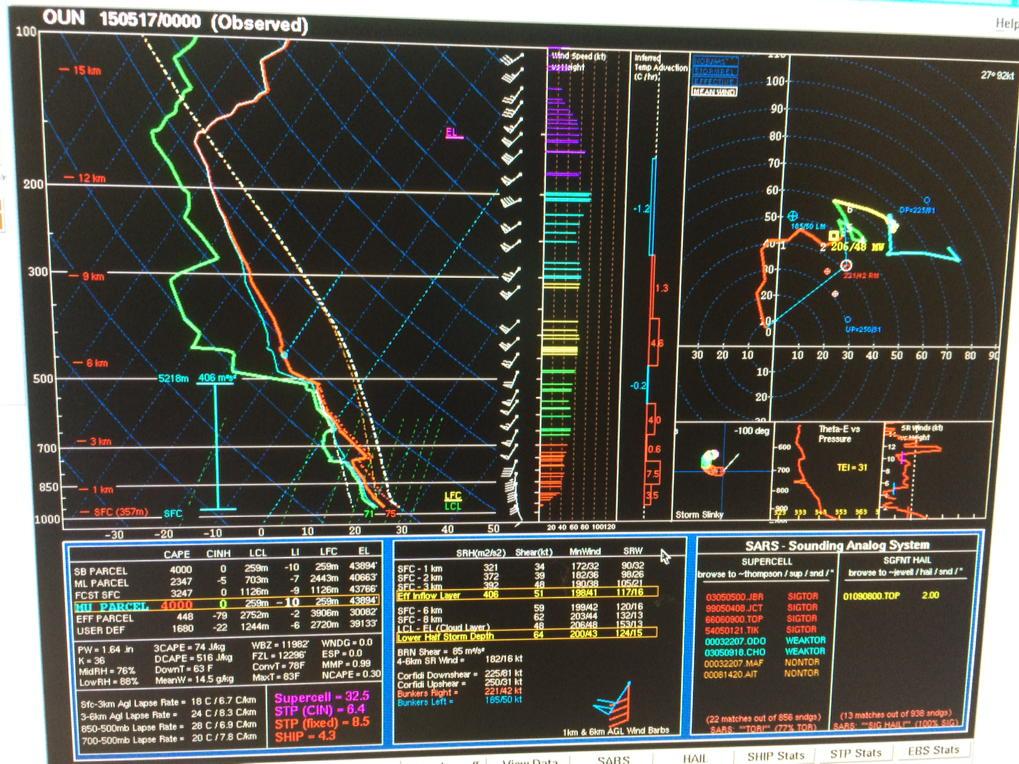Brian McKibben
EF3
Well i just woke up to the sun shining through my window. I quick glimpse at Vis and Radar doesn't show much is the way of a big organized system to work over the Atmos this morning. The storms seem to be getting more diffuse as the work toward the I-35 corridor, similar to what the models were suggesting last night.
So, I would say get ready and see what the 12z gives us. Could be an active day. 2000+ SBCAPE in 12z OUN Sounding.
Just thought I would throw this out there... Here is a quick look at the HRRR showing a STP of 15 west of OKC at 01z.

So, I would say get ready and see what the 12z gives us. Could be an active day. 2000+ SBCAPE in 12z OUN Sounding.
Just thought I would throw this out there... Here is a quick look at the HRRR showing a STP of 15 west of OKC at 01z.

Last edited:



